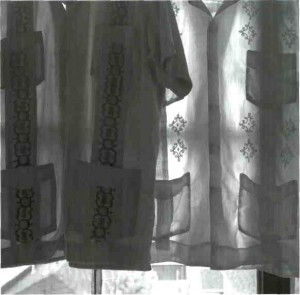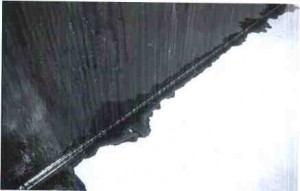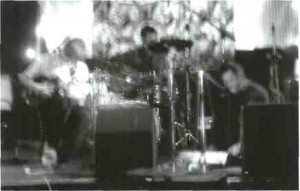If you have a toddler in the notorious incessant-question stage, you immerse yourself in the reference section to become an instant expert on the wherefores of the blueness of the sky, the friendship of thunder and rain, the criminal non-infinitude of chocolate and the mysterious manufacture of babies. But when the kid starts getting into not-for-beginners categories — like “why is there something instead of nothing?” — you’d best steer clear of astrophysics and phenomenology and check out the recordings on new-born Toronto CD label Rat-drifting, which ask such questions as directly as music can, and come up with an appropriately saucy set of replies.
Rat-drifting was launched with four late-June releases this year, the missing link between Spool in Vancouver and Constellation in Montreal as a Toronto outlet for the national new-generation boom in improvised music. Its roots run back through founder Martin Arnold’s compositional training with the likes of John Cage and Frederic Rzewski, and co-founder Erich Chenaux’s youth as a member of the Canadian punk-rock band Phleg Camp. That mix of studiousness and scrappy do-it-yourselfism distinguishes a community of artists that began making its presence felt with events like the Ulterior series at Toronto’s Victory Cafe circa 1999, and more recently in the Rat-drifting series Arnold has curated in various galleries and back rooms.
The name is a twist on the term “rat-running,” slang for avoiding the main roads and wending through the side streets, waking up neighbourhoods as you go. If the disparate styles that appear on the first four Rat-drifting releases have anything in common, it’s that sense of insouciant, unhurried meandering. “We don’t know where we’re going, but the fun is never knowing,” as the theme of an obscure 1970s TV cartoon about a train had it. (The Situationists rendered it less bouncily in their theories of the urban derive.) The four releases also share a stable of musicians: keyboardist Ryan Driver appears on all four, guitarist Chenaux and multi-instrumentalist Doug Tielli on three each. But they work from very different blueprints.
Treacle Wall by Marmots features the biggest ensemble of the four, an eight-piece playing four Arnold compositions that he accurately describes as 1950s tiki-lounge exotica blended with 14th-century European polyphonic music. At low volumes it can sound like a period-music group endlessly tuning up, but it’s better suited to the classic Dark Side of the Moon school of music listening — lying down in the dark on your bedroom floor, wearing only underwear and a pair of headphones. Then, it quickly becomes music to melt landscapes by.
The third track, “Shank; Shank’s Pony,” is Arnold at his most pleasantly disorienting. Using slide-friendly instruments such as violin (Sandy Barron), trombone (Tielli) and lap steel guitar (Kurt Newman), it elongates the listener’s sense of time, pulling every note through the ears like a piece of pink taffy — for over half an hour. It takes considerable patience, but that’s part of the point. This is music that almost dares you to listen — it is so unassuming that it would be a big leap for anyone in today’s Type-A empire of overtime to admit having nothing better to do than lie back and nod along to an hour’s worth of barely-there teeter-tottering tunes.
The fact that creating it took eight people and twenty-nine instruments (including harmonica, banjo, samplers, gated tapes, mandolin, dobro and sleigh-bells) doesn’t change how little there is to hear in Treacle Wall at any given moment. One of Arnold’s favourite elements, for instance, is an electric guitar he doesn’t plug in. This isn’t music that reaches out to you. You’ve got to go to it — and if there were a toddler around right now, I could only explain that sometimes detours are more fun than destinations.
None of the other releases are as recalcitrant, but nobody’s going to mistake them for K-Tel’s Best Surfin’ Songs either. The most “difficult” is in a sense the most familiar-sounding too, by Chenaux, Driver and Tielli as the Draperies. L’histoire du chapeau is a moody set of four pieces for synthesizer, guitar and horns that fits into the scratchy-scrapey school of “pure” improvisation: no forms, no chords, just intense investigation of the sonic range of your instruments and interplay with the other players. I always find such music more satisfying in concert than on disc. Live, you get to watch the players watch each other as they make their discoveries and decisions. When the music doesn’t gel you can while away the minutes watching how they physically coax babbles of moans, rustles and grunts from instruments usually used to play pretty ballads and singles-bar dance beats. Still, it is what these players have done in hundreds of recent concerts, and it’s valuable for a worthy sample to be documented.
Likewise improvised but much more explosive is the Chenaux-Driver project, The Guayaveras. Here, Chenaux leaves no doubt he’s plugged his guitar in, and Driver makes his synth sound like a synth; this could be Gary Numan jamming with Jimi Hendrix, except that it eschews melody and beats in favour of a chaos by turns scary (in the buzz-saw sounds of the opener and closer) and giddily ridiculous (on tracks such as Doly-nose). In some hands the concept of spontaneous robotics (or electronic gamelan) could become kitschy, but in general the Rat-drifters are careful not to paint overspecific content on top of the shapes they whittle out of empty space. As listener, you can ride these serrated grooves in whatever direction you please.
And if you please to leave the room instead, so be it. These recordings betray a bit of a weariness with the century-old (or older) debate about where music ends and noise begins. The Rat-drifters get more of a charge out of balancing precisely on the threshold of having an idea and not having one, of doing something and doing nothing, of Samuel Beckett’s “I can’t go on” and I’ll go on” Arnold admits a certain “slack” quality to the aesthetic, though like most so-called slackers the bunch of them work like bees. Whether they’re stinging or making honey, it seems a natural by-product of these personalities, one they’d produce with or without an audience. This lends all these discs a folk-music feel that contrasts to the more jazz-conditioned improv of the Spool artists, and the cool rock noise of much of the Montreal contingent. (Draw regionalist conclusions as you will.)
That hootenanny ambience works best of all for the Silt, an actual rock group of sorts, with Driver and Tielli and bassist Marcus Quin all playing multiple instruments. Long-awaited by the tiny, fervent crowd of live Silt devotees, Red Whistle summons up acoustic-strummin’ Neil Young – or maybe Raffi – but with a Rat-drifter orneriness that makes these songs bulge or collapse in all the “wrong” places, in three-part harmony. These are the kinds of songs kids might make up while they ride their bikes down to the ravine, full of gaps where their attention is distracted by traffic or a clattering pop can or a funny-looking passerby. Driver, in particular, delivers treats such as “It’s Too Bad Kites Don’t Smoke,” which are at once poignant pop tunes and mockeries of musical satisfaction. In what might be the Silt’s manifesto, on the title track Driver croons, “I wrote a song about a red whistle blowing … but I sure can’t sing it any more.”

A second Silt disc is already in the works. Other upcoming Rat-drifting releases may include songs by Chenaux and former Crash Vegas singer Michelle McAdorey, compositions by Stephen Parkinson and by Tielli, warped jazz standards by the Ryan Driver Quartet (with superb bassist Rob Clutton), Driver and Kurt Newman’s tuneful Golden Melody Awards … or maybe none of the above. Maybe the Rat-drifting label will slip back out of existence as haphazardly as it surfaced. Yes, it would be a loss for the imaginative horizon of Canadian music – but where is that horizon anyway? Is it in Oakville? Is it in Texas, daddy? Can we drive to it? What happens when you get there? Why? Yes, but why? Well, why not?

